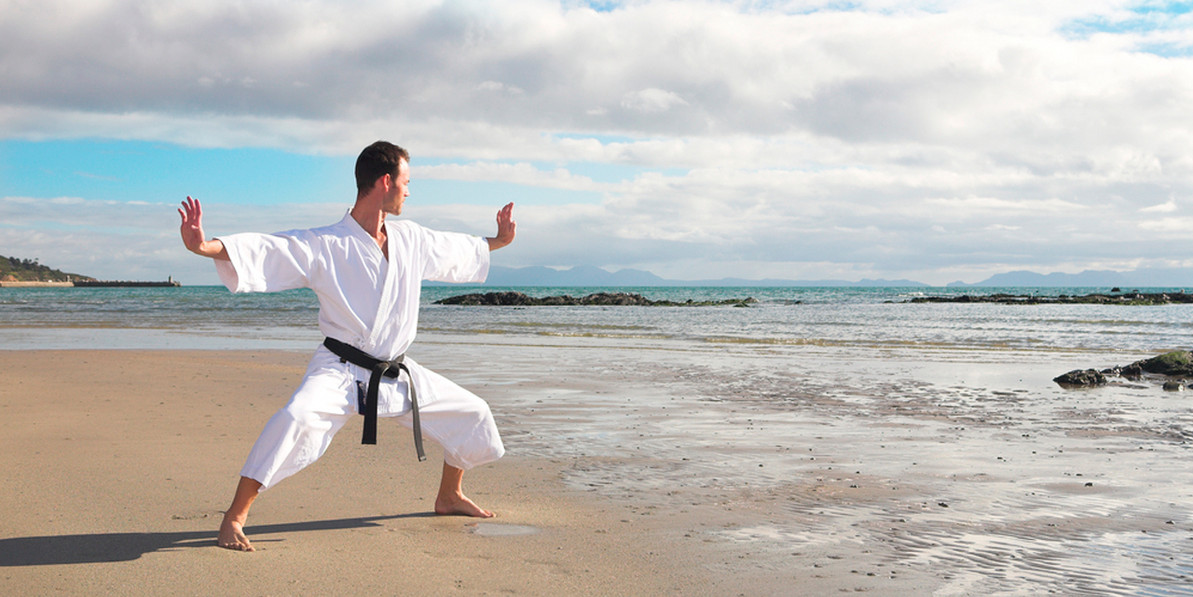Tips to Help You Improve Your Kata
Here are some great tips we’ve gathered which should help you to improve your Kata.
Make sure you don’t look at the kata as a whole as this can be very overwhelming - it is essential to break it down into individual movements. After all, a kata is nothing more than connecting all of these individual movements into a single group.
Look at each movement and the understand the reason behind it. Is it a defensive reaction? A form of attack? How does it flow into the next one or the one before it? When you see the overall ebb and flow of a kata it’s easier to remember the movements just like you would remember dance moves to a popular song.
Group the movements into smaller sections of three to five movements and then practice them over and over in these sets. Then mentally when you complete one set you can begin the next three or four after it. Start at the beginning and make sure that first group is as perfect as you can make it before moving on to the next group and the next. It is much easier to remember when you break the kata down into easy to remember movements.
A handy tip is to perform in front of a mirror to help you see possible flaws in your movement if no one is available to help you. You could also set up a camera or your phone to video the movements so you can watch it back. Check the angles of your feet, arms and back to make sure that you’re in the right position to move to the next form. If it feels wrong, it probably is – remember, these katas have been around for decades and have been performed by millions of artists, so if your foot is twisting unnaturally from one side to the other it’s likely that you’re the one at fault, not the kata. Even the smallest adjustment can make a world of difference and allow a more even flow from section to section.
Breathing is so crucial to kata and you need to maintain a calm, rhythmic breathing at all times. Huffing and puffing won’t get you through the forms any faster, and will only hinder you in the long run. Take your time, perfect each movement and take a deep breath when needed. You don’t get points for racing through a kata, even if you’ve seen it done faster. Remember that those black belts dancing their way around the floor with swords or a staff in hand once were just where you are – learning the basics and going at a slow pace to perfect their form and movement. Speed may be flashy, but in the long-run, you will be judged on how accurately you follow the kata, not how quickly you go through it.
At some black belt gradings the student is required to perform every single kata they have learned to illustrate their mastery before they can be graded. One single misplaced foot or a loss of balance can make the difference between a good kata and a great kata!
Kata isn’t only to help you perfect the physical motions, in fact, many martial artists perform katas not to improve themselves so much physically as to increase their inner awareness of their own person and how to improve their skill with a purity of mind and body.
If there are seminars available to you, if possible, go. Check with your instructor to see if anyone is coming. Every year in New Zealand we are lucky to be visited by several karate masters. It is amazing the little things you can learn which will greatly improve your karate.
Learning a kata can be a very rewarding experience, allowing you to grow both mentally and physically. The next time you find yourself faced with a difficult kata take your time, remember some of these tips and see if they can help you master the moves easier and assist you in moving to the next level.
Recent Posts
-
How to Fill a Boxing Bag
Filling a punching bag is straightforward, but using the right materials and technique is key to ens …26th Jun 2025 -
A Tale Woven in Threads: Unraveling the History of the Dogi
In the world of martial arts, the dogi stands as a symbol of discipline, tradition, and resilience. …1st Mar 2024 -
History and benefits of Muay Thai shorts
Muay Thai, the art of eight limbs, is not only a martial art but also a cultural phenomenon deepl …21st Feb 2024





